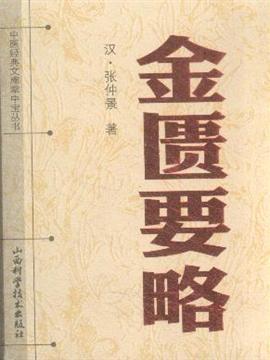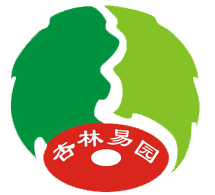Synopsis of the golden chamber, written by Zhang Zhongjing in the Eastern Han Dynasty, is about 206 years old. It is the earliest special book for diagnosis and treatment of miscellaneous diseases in our country. Together with treatise on febrile diseases, it has established the theoretical system of syndrome differentiation and treatment of traditional Chinese medicine. The prescriptions contained in it are honored as "Jingfang" by later generations and are the model for later generations to use them.
1、 Book background
At the end of the Eastern Han Dynasty, Zhang Zhongjing lived in Nanyang County, where the war lasted for years, so that the people could not live, the disease was widespread, and the death rate was high. As Zhang Zhongjing said in the preface to treatise on febrile diseases, "there are many elements in Yu's clan. Since the Jian'an era, they have not had ten years of experience. Two thirds of them have died, and ten of them live in seven." At that time, most of the doctors "inherited their own skills, and always followed the old", which was difficult to achieve results. In front of the serious harm caused by the serious epidemic situation to the people's life and health, Zhang Zhongjing "diligently pursues the ancient maxim, widely adopts all kinds of prescriptions, compiles and uses" Suwen "," jiujuan "," 81 difficult "," Yinyang treatise "," fetal Lu medicine record ", and Flates the pulse syndrome differentiation". On the basis of inheriting the previous academic achievements and summarizing a large number of clinical practice experience, he compiled "Treatise on typhoid and miscellaneous diseases". There are 16 volumes of treatise on Febrile Diseases and miscellaneous diseases, including 10 volumes of "febrile diseases" and 6 volumes of "miscellaneous diseases", among which the part of "miscellaneous diseases" is now "synopsis of the Golden Chamber". The content of the book is mainly internal medicine, and also Gynecology, surgery and other clinical disciplines, is the foundation of clinical medicine.

2.1. Model the holistic medical model of the unity of man and nature
"Correspondence between heaven and man" is the basic academic thought of Huangdi's Internal Classic. The synopsis of the Golden Chamber inherits the theory of Internal Classic. In the process of understanding and treating diseases, the internal and external environment of the body is regarded as a unified whole, and all diseases are treated with a holistic concept. In the pathogenesis, the first chapter, Section 2, said: "Madame has five natures and grows with the wind. Although the wind can produce all things, it can also harm the normal. "If the five zang organs are really unobstructed, people are peaceful, polite and evil, many people die, and all things are created". It is to discuss whether the birth, aging and death of human beings are related to the natural climate and whether there are various diseases and difficulties, no more than three points ". It is to discuss that the health of human body is closely related to the rise and fall of disease and healthy qi, reflecting the holistic view of human body. The principle of "care" and the thought of "prevention before treatment" put forward in this paper are the full embodiment of the holistic view in disease prevention and treatment.
2.2. Establish the thought system of syndrome differentiation and treatment of viscera and meridians
The first part of synopsis of the golden chamber is the program of the whole book. It is named after the title of "syndrome of viscera and meridians first in succession". It is intended to point out that miscellaneous diseases should take viscera and meridians as the basic theoretical core. The pathogenesis of miscellaneous diseases is located in the viscera and meridians. The occurrence of miscellaneous diseases is the response of the overall dysfunction and pathological changes of the viscera and meridians. Therefore, the syndrome differentiation of miscellaneous diseases must be clear about which is the first and which is the second, so as to distinguish the law of transmission, pathological trend and prognosis. The principle of "liver diseases first strengthen the spleen" and the principle of "diseases in the viscera, if you want to attack them, you should attack them according to their income" are based on the dialectical method of viscera, meridians and collaterals. For example, the lily disease is mainly located in the heart and lung, the impotence, lung carbuncle, cough, upper gas disease is mainly located in the lung system, and the vomiting, diarrhea and other diseases are mainly located in the spleen and gastrointestinal system. For stroke, the syndrome differentiation is based on the diseases in the collaterals, meridians, viscera and human organs, which is an example of the syndrome differentiation of the viscera and meridians.
2.3. Create a diagnosis and treatment system with disease as the key point, disease syndrome combination, pulse syndrome combination and syndrome differentiation
The book is divided into two parts, each of which is named after the disease. The title of the book is "x x disease pulse syndrome treatment" or "x disease pulse syndrome combined treatment". This writing style highlights Zhang Zhongjing's important academic thinking of combining the treatment of miscellaneous diseases and syndrome differentiation, pulse and syndrome interaction, syndrome differentiation and treatment. From the aspect of diagnosis and treatment procedure, first identify the disease, diagnose the name of the disease to define the scope of the disease; then recognize the syndrome, combine the disease and syndrome, pulse and syndrome, according to the legislative prescription. Among them, Zhang Zhongjing's extensive application of pulse method in Synopsis of the golden chamber is its characteristic, which is used to explain the pathogenesis, distinguish the disease and syndrome, and establish the general theory of "treating Yang and micro Yin string" the etiology and pathogenesis of chest arthralgia disease; method, to judge the prognosis. For example, Section 1 of "chest pain and shortness of Qi disease" takes "too much pulse, but" the deficiency of pulse is the impotence of lung, the excess of pulse is the carbuncle of lung ", which is based on the pulse to identify the disease syndromes;" the carbuncle and the impotence of lung ", which are both the pulse of the two diseases", which is based on the pulse to determine the treatment prescription; "cough and upper Qi disease", "cough and pulse floating, which is the main of Houpu Mahuang Decoction; the sinking pulse, which is the main of Zeqi decoction," which is the inferior disease ", If "the number of lower meridians, slight heat, sweating, and self-healing now; set pulse tightness as unresolved", it is to judge the prognosis by pulse condition.
2.4. The method of using medicine is rigorous, and it is the originator of prescription science
"Synopsis of the Golden Chamber" is also a prescription book, which contains more than 260 prescriptions. It has a rigorous composition and a well matched prescription. As Xu Lingtai, a doctor of later generations, said: "Zhongjing medicine can not be used without moving and borrowing. Otherwise, it can't be used to cure the disease. It's subtle, profound and inconceivable." Zhongjing prescription is also called "the ancestor of the prescription book" and also known as "Jingfang". It's a classic for later generations to use the prescription medicine Fan. Although there are many methods of treatment in traditional Chinese medicine, they are generally summed up in eight methods. The sweat of Magui and other prescriptions in the book, the vomiting of Guadi decoction, the combination of Chaihu and Chaihu, the temperature of Lizhong, the clearing of white tiger, the elimination of Biejia Decoction pill and Zhishu pill, and the supplement of Jianzhong and Shenqi Pill have become the classic prescriptions of "eight methods" and the basis of legislative system in successive dynasties.
"Synopsis of the Golden Chamber" also created various dosage forms, in addition to decoction, pill, powder, alcohol and guide medicine, sitting medicine, fumigation, washing, external application liniment, convulsion nose, etc. are not all prepared; decoction method and medication method of decoction are also very exquisite, which has made a great contribution to the development of pharmaceutics in China.
3、 Learning points
3.1. Grasp the academic characteristics of the book
"Synopsis of the Golden Chamber" is the miscellaneous part of "Treatise on febrile miscellaneous diseases" written by Zhongjing. It is composed of "Neijing", "Nanjing", "yiyintangyijing" and "shennongbencaojing". The basic guiding ideology of "correspondence between man and nature" and "overall concept" is particularly prominent in "synopsis of the Golden Chamber". "Synopsis of the Golden Chamber" and "Treatise on Febrile Diseases" are both from Zhongjing's hands, but "Treatise on Febrile Diseases" mainly refers to three yin and three yang (later generations call six meridians) as syndrome differentiation program, while "synopsis of the Golden Chamber" mainly refers to internal injuries and miscellaneous diseases, which should take viscera and meridians as the basic theoretical core, so the title of the first chapter of this book is "syndrome of viscera and meridians successively". This book pays attention to syndrome differentiation and treatment, the combination of disease and syndrome, pulse syndrome and ginseng, the same disease and different treatment, different disease and treatment and other characteristics are very clear. In terms of treatment methods, we should pay more attention to the comprehensive adjustment and treatment of healthy qi according to the spirit that treatment must be based on. For chronic deficiency diseases, special attention should be paid to regulating and nourishing the spleen and kidney, so invigorating the spleen and kidney has become the fundamental treatment for internal injuries. But at the same time, we have not neglected the side of eliminating pathogenic factors. We should pay attention to the positive Qi every time when removing pathogenic factors. First, we should add people's strengthening medicine to eliminate pathogenic factors. Second, we should be very careful when using the method of eliminating pathogenic factors. Generally, we should start from a small dose and gradually increase it later, or take "the middle disease stops" as the degree to avoid damaging the positive Qi due to chasing pathogenic factors. In the aspect of medication and nursing, "self-cultivation of MI congee" is also a specific way of caring for healthy qi.
3.2. Pay attention to the structural features of the book
This book is divided into 25 parts. The first one is the general theory of the whole book. In this chapter, according to the theory of Neijing and Nanjing, combined with clinical and practical experience, Zhongjing has made some principled discussions on the causes, pathogenesis, diagnosis, prevention and treatment of miscellaneous diseases. Therefore, this chapter has programmatic significance. Therefore, learners should first study and understand its spiritual essence. From the second part to the twenty second part, the titles are all titled "syndrome and treatment of XX disease pulse" or "syndrome and treatment of XX disease pulse", among which the second part to the seventeenth part are internal diseases; the eighteenth part is surgical diseases; the nineteenth part is a combination of several diseases that are inconvenient to summarize, such as fall, finger swelling, tendon transfer, Yin fox hernia, Ascaris; the twentieth to twenty-two parts are specific obstetrics and gynecology diseases.
Most of the articles first discuss the etiology, pathogenesis and main symptoms of the disease, and then classify syndromes, treatment methods and prescriptions, which reflect the methods of Zhongjing disease syndrome combination, pulse syndrome combination, syndrome differentiation and treatment as a whole, and the idea of diagnosis and treatment of miscellaneous diseases that integrates the pulse syndrome treatment and the principles and prescriptions. Chapter 23 is miscellaneous therapy, and chapters 24 to 25 are diet taboos. Since the Ming and Qing Dynasties, many scholars, such as Zhao Yide, Wei nianting and you Yi, all believed that these three works were not Zhongjing '. It should be recognized that these three articles discussed various rescue methods of acute and severe diseases, such as sudden death, self hanging, drowning and food poisoning, and emphasized the importance of food hygiene, which laid a foundation for the development of emergency science, dietotherapy and preventive medicine of traditional Chinese medicine in the future, both in theoretical guidance and clinical practice have important scientific value We have to study hard and study deeply.
3.3. Understand the writing and grammar characteristics of the book
From the background of "synopsis of the Golden Chamber", it can be seen that it comes from the same book as "Treatise on Febrile Diseases", namely Zhongjing's treatise on febrile diseases. From its content, treatise on febrile diseases is often accompanied by miscellaneous diseases, which are often caused by exogenous pathogens. Zhongjing, based on a large number of medical practice, adopts the compiling method of "syncretic and syncretic" and "syncretic and syncretic" for typhoid fever and miscellaneous diseases. The contents of "Treatise on Febrile Diseases" and "synopsis of the Golden Chamber" naturally exist this detailed and syncretic situation When we read it, we should read it together with the treatise on febrile diseases, which is helpful to understand and complement each other. It can be called sister treatise, which can not be separated completely. So, we are grasping its essence. The book is characterized by its exquisite grammar, such as the application of the method of deciding the subject by the guest, inserting the pen, and inversion, etc. to learn Zhongjing's grammar is also helpful to understand the theme thought expressed by Zhongjing.
3.4. Be familiar with the edition of this book
Zhaokaimei School of Ming Dynasty engraved the edition of "synopsis of the Golden Chamber", which is the edition of "synopsis of the Golden Chamber" printed by the school, which is more precise and less erroneous. Later, it is mostly used as the blueprint of the textbook of "synopsis of the Golden Chamber" in each edition of the College of traditional Chinese medicine, and it is one of the recognized good books. The book comments are based on the engraved edition of Zhao kaimei school.
Yu Junsheng
August 2017


